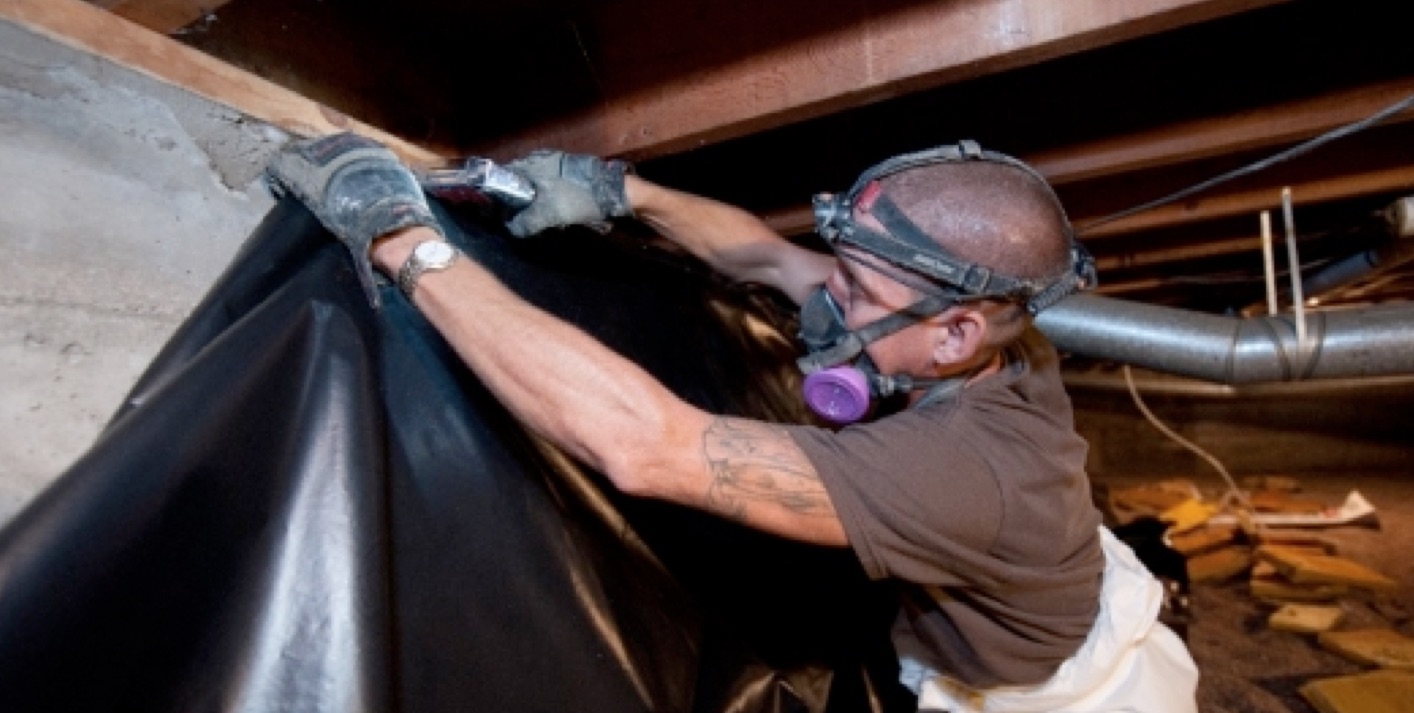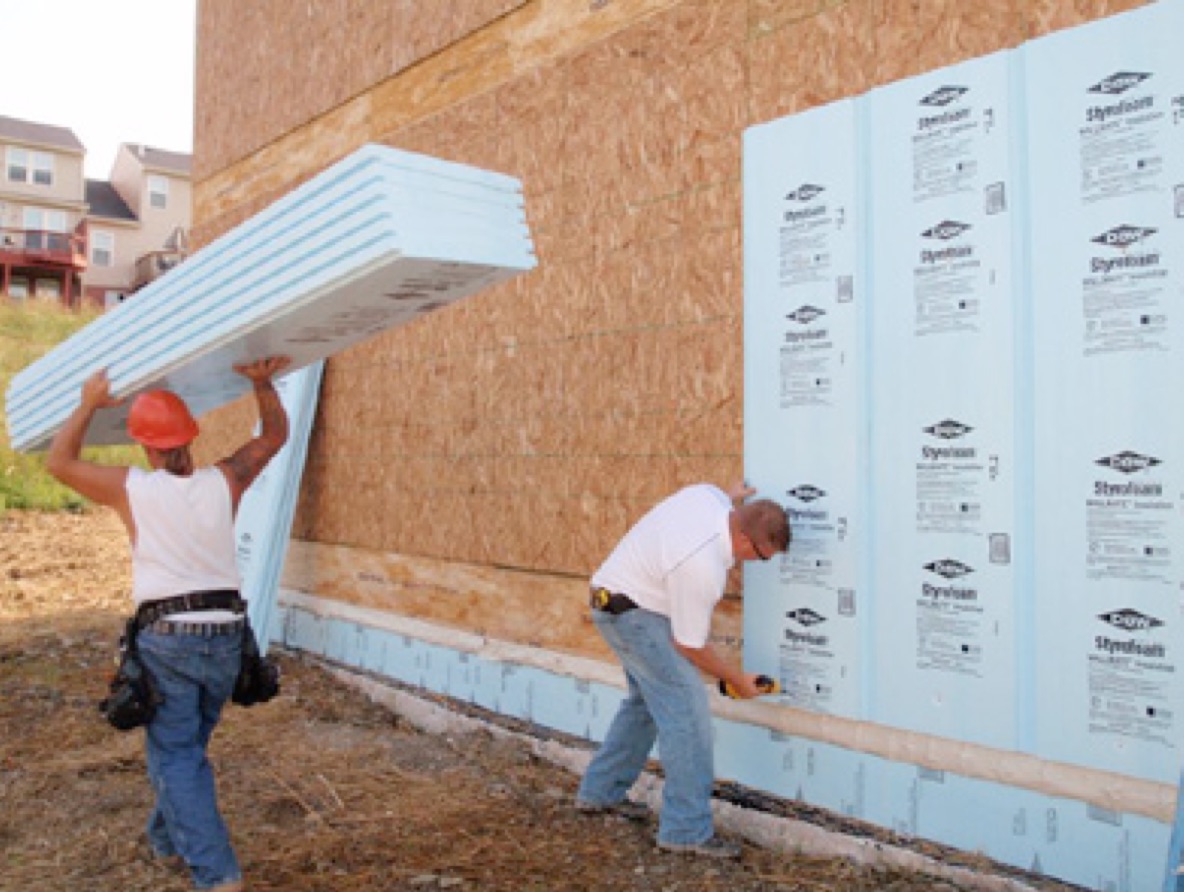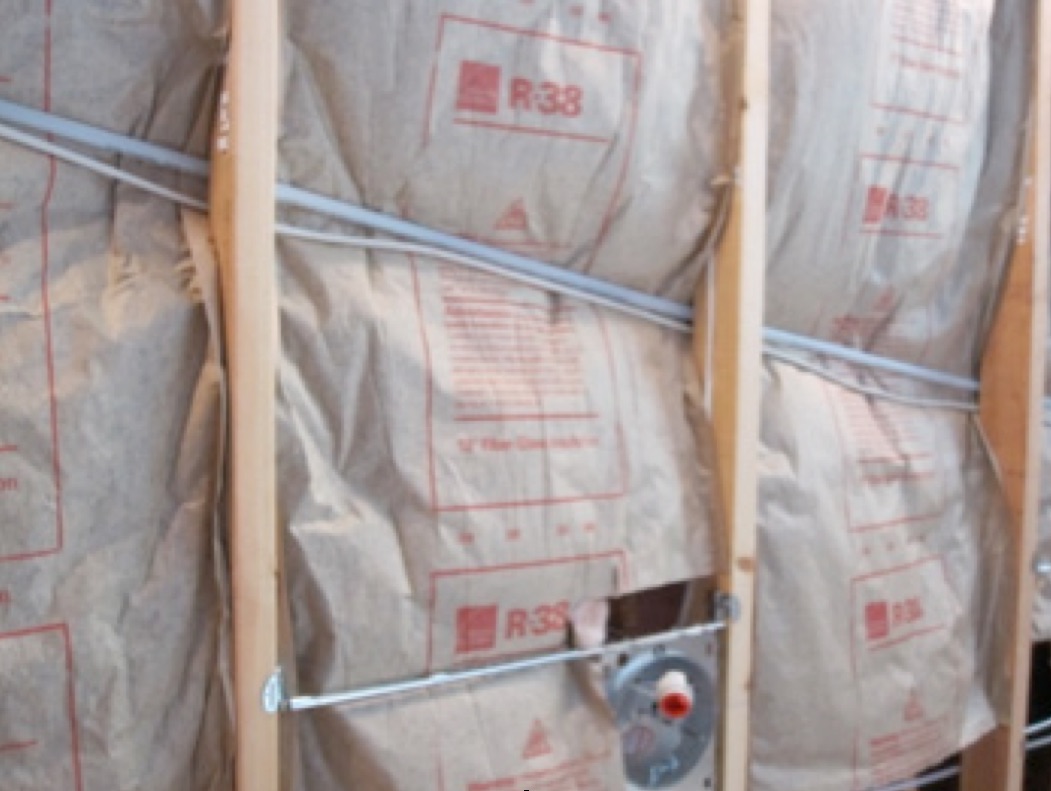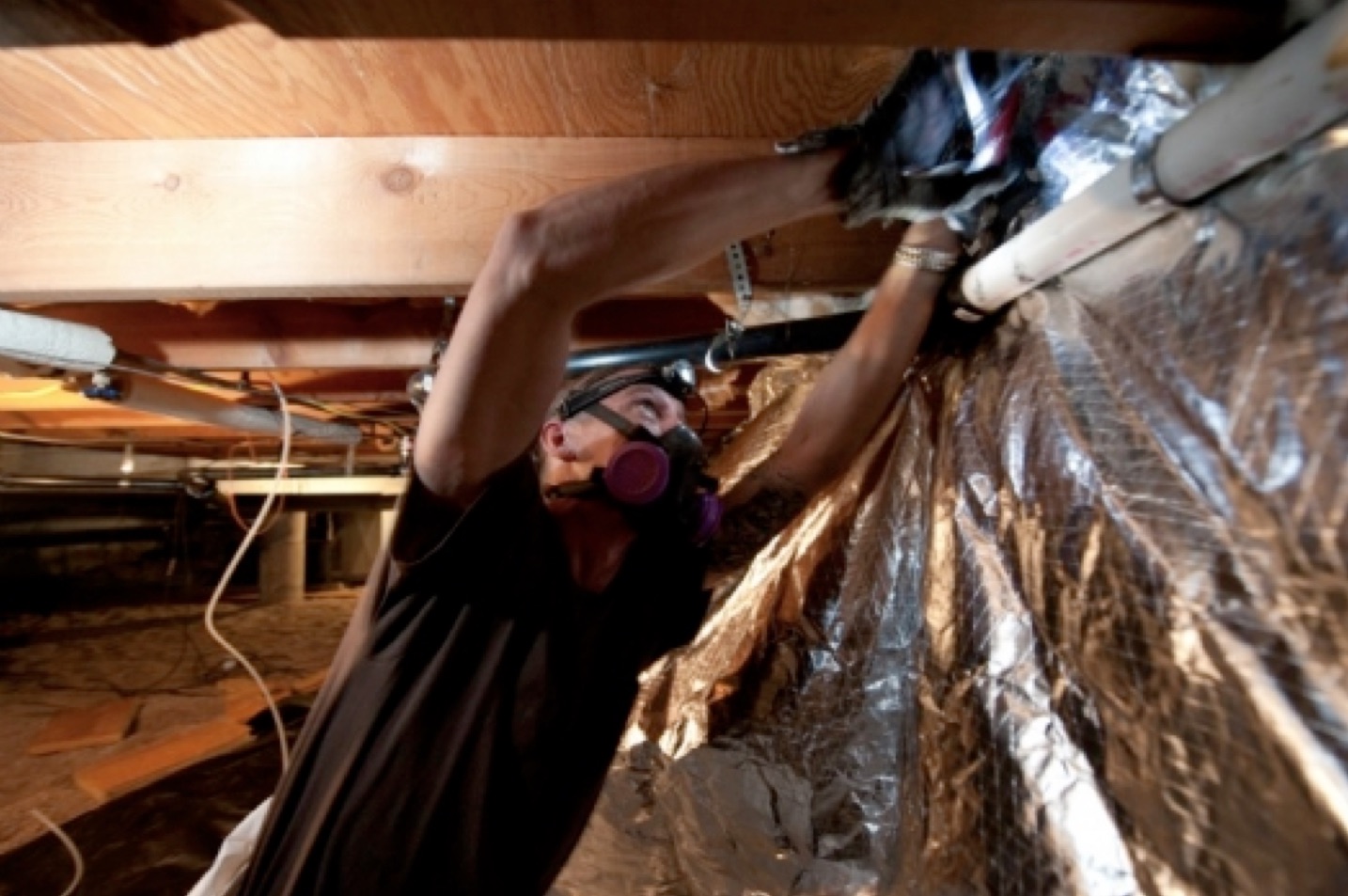by Nick Gromicko, CMI® and Ben Gromicko
We want our building enclosures to do two basic things:
- keep water out; and
- if water gets in, let it out.
Water can enter a building as a liquid, a solid, as a vapor, and it can be adsorbed (that's adsorbed with a "d"). Rain water is an example of a liquid. Ice is an example of a solid. And the steam from a boiling pot is an example of water vapor. We won't get into adsorption in detail, but the way in which micro-pores of a plaster and straw wall can adsorb a remarkably large amount of water into/onto the material is a good example of adsorption.
This concept of moisture movement can be complicated to understand. One issue is that we have and use so many terms, including air barriers, vapor barriers, vapor diffusion retarders, vapor permeable and impermeable. Home inspectors often find it challenging to speak with contractors and building officials without using the same terminology.
The most important terms a home inspector should understand is that:
- a vapor retarder retards the movement of water by vapor diffusion; and
- a vapor barrier is a vapor retarder of a certain class--Class I vapor retarder (see below for classes).
But before we get into defining retarders, perms, and classes, let's learn more about how moisture moves.
Movement
Let's concentrate on how moisture and water vapor moves in and out of a home in basically three ways:
- with air currents;
- by diffusion through materials; and
- by heat transfer.
Of these three, air movement accounts for more than 98% of all water vapor movement in building cavities. Air naturally moves from high-pressure areas to lower pressure areas by the easiest path available -- generally, through any available hole or crack in the building envelope. Moisture flow by vapor diffusion is also governed by the second law of thermodynamics, where moisture will flow because of a concentration and temperature gradient (from high-to-low and from more-to-less). And that means moisture tends to move in cold climates from inside out, and in warmer climates move from the outside in.
Moisture transfer by air currents happens quickly, and carefully and permanently air sealing any unintended paths for air movement in and out of the house is a very effective moisture control strategy.
Air Currents & Air Leaks
Most water vapor movement in and through buildings is via air. Air-transported moisture (in the form of water vapor hitchhiking on air) can leak into, or out of, buildings. Leaky ductwork, for example, can cause moisture problems by not only increasing the amount of infiltration, but by drawing air in from the humid crawlspace or basement area. As this humid air travels through a building, the moisture in it will condense on any surface whose temperature is below the dew point.
Water vapor can be a source of damage when it is trapped within a building assembly and cannot dry out. Warm air "carries" more water vapor than cold air. When warm air touches a cold surface, the water vapor it carries can condense, turning the vapor into its liquid form, where it can cause damage to structural components.
Understanding how water vapor moves can help home inspectors understand what they're observing when inspecting visible vapor diffusion retarders.

Vapor Diffusion
Even without air leaks, small amounts of moisture in the form of water vapor can pass directly through a building’s envelope, through a process called diffusion. Vapor diffusion from a damp or wet basement into the living space can significantly increase the moisture levels inside a home.
The amount of vapor diffusion that occurs in a building is determined by two things:
- the driving force that pushes it (known as the “vapor pressure differential”), and
- the permeability of the material the vapor is passing through.
Most materials (even glass) are unable to completely stop vapor diffusion; thus, calling something a “vapor barrier” is a bit of a wrong label. The current trend in building science is to refer to materials as “vapor retarders,” meaning that while they retard or slow down the movement of water vapor, they do not completely halt the process. Materials that significantly slow down the vapor diffusion process are said to have low permeability, or simply “low-perm.” Typical building codes consider a material to be a vapor retarder if it has a perm rating of 1.0 or less.
Vapor retarders are often applied in the crawlspace of a building to prevent ground moisture from evaporating and traveling up into the home. Many building codes require applying such vapor-retarding materials under wall board to prevent vapor diffusion from bringing water into the structural assemblies. In cold climates during the heating season, pressure differential drives the vapor from the inside of the building to the outside. In Minnesota, USA, the vapor barrier is generally installed on the interior face of the wall studs. In warm climates during the cooling season, this vapor drive is from the outside of the building towards the inside – thus, in Miami, Florida, USA, vapor retarders are often applied on the outside of buildings. Besides the perm rating of the material, the effectiveness of a vapor retarder is also a function of its surface area. A vapor diffusion retarder that covers 80% of a building is said to be “80% effective.”
Moisture Control
In most North American climates, vapor barriers (or, more accurately, vapor diffusion retarders) should be part of a moisture control strategy for a home. A vapor diffusion retarder is a material that reduces the rate at which water vapor can move through a material. The older term "vapor barrier" is still used even though "vapor diffusion retarder" is more accurate.
It is a myth that installing vapor diffusion retarders is the most important step for controlling moisture in walls. Vapor retarders only retard moisture due to diffusion, while most moisture enters walls either via fluid capillary action or as water vapor through air leaks.
Most climates require these moisture control steps:
- Install a polyethylene groundcover on the earthen floor of houses with crawlspaces.
- Slope the ground away from the foundations of all houses.
- Install a continuous vapor retarder (if required in your climate) with a perm rating of less than 1. Let's talk more about vapor retarders.
Vapor Diffusion Retarder
Stopping air leaks by thoroughly air sealing the building envelope is an important step in limiting damage from water vapor. Water vapor can also be carried through building components by diffusion, driven by pressure and temperature differences. Vapor diffusion can be impeded by use of a vapor diffusion retarder.
The image above shows the installation of a vapor diffusion retarder in a crawlspace.
(Image credit: NREL)
Vapor diffusion retarders can help control moisture in:
- basements;
- ceilings;
- crawlspaces;
- floors;
- slab-on-grade foundations; and
- walls.
Air Sealing Needed
Effective moisture control in these areas and throughout a home must also include air sealing gaps in the structure, not just the use of a vapor diffusion retarder. How, where, and whether a vapor diffusion retarder is needed depends on the climate and the construction of a home.
Vapor Diffusion Retarder Classes and Perms
The 2024 IRC describes three classes of vapor retarders, including Class I, II, and III, which are directly related to their perm ratings.
Table 1. Class definitions and examples
Class I and II
The 2015 IRC R702.7 specifies the use of Class I or II vapor retarders on the interior side of framed walls (between the insulation and the drywall) in Climate Zones 5, 6, 7, 8, and Marine 4.
View the IECC Climate Zone Map. The exceptions are basement walls, any portion of a wall below grade, and areas where moisture or its freezing will not damage the materials.
Class I vapor retarders (0.1 perms or less) include:
- glass;
- sheet metal;
- unperforated aluminum foil;
- polyethylene sheet; and
- rubber membrane.
Some builders refer to Class 1 vapor retarders as vapor barriers, but the code no longer uses the term "vapor barrier."
Class II vapor retarders (greater than 0.1 perm and less than or equal to 1 perm) include:
- unfaced expanded or extruded polystyrene;
- 30-pound asphalt-coated paper; and
- plywood bitumen-coated kraft paper.
Class III vapor retarders (greater than 1 perm and less than or equal to 10 perms) include:
- gypsum board;
- fiberglass insulation (unfaced);
- cellulose insulation;
- board lumber;
- concrete block;
- brick;
- 15-pound asphalt-coated paper;
- housewrap; and
- latex or enamel paint.
Because of a change in the 2009 IRC, Class III vapor retarders (e.g. latex paint) are now permitted in several climate zones (see Table 2 below) when the wall is constructed in a way that allows drying through the use of vented cladding (e.g., brick or lap siding with an air space behind it), or reduces the potential for condensation by the use of insulating rigid foam sheathing.
The image above shows the installation of rigid foam insulation on a new home.
(Image credit: IBACOS)
Table 2. Zones in which Class III is permitted
The U.S Department of Energy's Building America scientists caution that the recommendation to install a vapor barrier on the warm-in-winter side of the wall assemblies is difficult to apply in mixed climates or climates that are air-conditioned in summer. They recommend that walls should be allowed to dry to the inside, the outside, or both sides, and they don’t recommend the use of Class I vapor retarders in any but the coldest climates.
In older homes, Class 1 vapor retarders (i.e., plastic sheeting) were often installed on the interior side of the walls in all climate zones. If the walls are very drafty due to lack of insulation and air sealing, drying can still occur. When insulation and air sealing are added, consideration should be given to any existing vapor retarders to minimize the likelihood of condensation problems.
Vapor Permeability
Vapor impermeable: ≤0.1 perm
Vapor semi-impermeable: >0.1 perm and ≤1.0 perm
Vapor semi-permeable: >1.0 perm and ≤10 perms
Vapor permeable: >10 perms
Types of Vapor Diffusion Retarders
Vapor diffusion retarders are typically available as membranes or coatings. Membranes are generally thin, flexible materials, but also include thicker sheet materials sometimes called structural vapor diffusion retarders. Materials such as rigid foam insulation, reinforced plastics, aluminum, and stainless steel are relatively resistant to water vapor diffusion. These types of vapor diffusion retarders are usually mechanically fastened and sealed at the joints.
Thinner membrane types come in rolls or as integral parts of building materials. Common examples include polyethylene sheeting and aluminum- or paper-faced fiberglass roll insulation. Another type is foil-backed wallboard. Most paint-like coatings also retard vapor diffusion.
Installing Vapor Diffusion Retarders for New Construction
In mild climates, materials such as painted gypsum wallboard and plaster wall coatings may be enough to impede moisture diffusion. In more extreme climates, higher-perm vapor diffusion retarders are advisable for new construction. They perform best when installed closest to the warm side of a structural assembly -- toward the interior of the building in cold climates, and toward the exterior in hot-wet climates.
A vapor diffusion retarder installation should be continuous and as close to perfect as possible. This is especially important in very cold climates and in hot-humid climates. Care should be taken to completely seal any tears, openings and punctures that may occur during construction.
The image above shows a poorly installed insulation and retarder.
(Image credit: Pacific Northwest National Laboratory [PNNL])
All appropriate surfaces should be covered or moist air within the cavity may condense, which could lead to dampened insulation. The thermal resistance of wet insulation is dramatically decreased, and prolonged wet conditions will encourage mold growth and wood rot.
Installing Vapor Diffusion Retarders in Existing Homes
Except for extensive remodeling projects, it's difficult to add materials such as sheet plastic as a vapor diffusion retarder to an existing home. Obtaining an energy audit and thoroughly sealing any leaks it reveals is a very effective strategy for slowing moisture movement in and out of a home.
The image above shows the installation of insulation with a retarder in an existing home.
(Image credit: NREL)
A home may not need a more effective vapor diffusion retarder than the numerous layers of paint on its walls and ceilings unless it is located in an extreme northern climate. "Vapor barrier" paints can be an effective option for existing homes in colder climates. The perm rating of the paint should be indicated on the label. Glossy paints are generally more effective vapor diffusion retarders than flat paints, and acrylic paints are generally better than latex paints.
Combination Air Barriers/Vapor Diffusion Retarders
An air barrier/vapor diffusion retarder attempts to accomplish water vapor diffusion and air movement control with one material. This type of material is most appropriate for southern climates, where keeping humid outdoor air from entering the building cavities is critical during the cooling season.
In many cases, air barriers/vapor diffusion retarders consist of one or more of the following materials:
- polyethylene plastic sheets;
- builder's foil;
- foamboard insulation; and
- other exterior sheathings.
Air barriers/vapor diffusion retarders are generally placed around the perimeter of the building just under the exterior finish, or they may actually serve as the exterior finish. The key to making them work effectively is to permanently and carefully seal all of the seams and penetrations, including around windows, doors, electrical outlets, plumbing stacks, and vent fans.
Missed gaps of any size not only increase home energy use, but also increase the risk of moisture damage to the house, especially during the cooling season. An air barrier/vapor diffusion retarder should also be carefully inspected after installation before other work covers it. If small holes are found, they can be repaired with caulk, polyethylene or foil tape. Areas with larger holes or tears should be removed and replaced. Patches should always be large enough to cover the damage and overlap any adjacent wood framing.
Effects of Moisture Flow on Durability
Moisture is a common cause of building degradation. In fact, much of
what we know about applied building science today originates from early
work investigating moisture impact on buildings. While the severity of
moisture problems varies greatly depending on climate, few regions in
North America are free from concerns about moisture in buildings.
Moisture can attack a building’s durability on many fronts, from wet crawlspaces to leaking roofs. Moisture-rich air can even become trapped in building structural assemblies, possibly leading to mold growth, rot, or insect infestation. Entire industries have developed that specialize in combating these various moisture problems.









